There aren’t many Print Shops where you hear the sound of primates, the drumming of an emu or the roaring of a lion as you heat up your print equipment to begin the day’s production. But, this is the exact situation at the in-plant print shop at Moorpark College (Moorpark).
Kerry Mehle, Graphic Communication Technician, is a one man show. He is solely responsible for managing the entire print operation for Moorpark and he provides print services to the Moorpark, Ventura and Oxnard College campuses. Kerry is a relatively new Print Shop Pro® User, having just purchased PSP in April of 2017. Kerry invited us to tour his print shop, college campus and campus zoo to see some of his work and to talk about his path to automation and how he manages his workload leveraging Print Shop Pro® (PSP).
About Moorpark College
Moorpark College was opened September 11, 1967 and is one of the three colleges in the Ventura County Community College District, and part of the California Community College system of 109 community colleges. Moorpark is ranked 4th best Community College in the United States.
The campus is located an hour NW of Los Angeles and is a short drive from the Thousand Oaks/Agoura Hills areas in the city of Moorpark, California. Moorpark is one of the most beautiful community colleges in California.
 Moorpark College is also home to America’s Teaching Zoo. It’s Exotic Animal Training and Management program (EATM) is among the best in the U.S. and receives such high demand from interested students, both nationally and internationally, that it requires a lottery system to manage admission requests. The Zoo is home to an amazing collection of exotic animals that includes marmosets, leopard geckos, alligators, an emu, bengal tigers, african lioness, spotted hyenas, mountain lions, a wide variety of primates, birds, reptiles and many other exotic and endangered animals.
Moorpark College is also home to America’s Teaching Zoo. It’s Exotic Animal Training and Management program (EATM) is among the best in the U.S. and receives such high demand from interested students, both nationally and internationally, that it requires a lottery system to manage admission requests. The Zoo is home to an amazing collection of exotic animals that includes marmosets, leopard geckos, alligators, an emu, bengal tigers, african lioness, spotted hyenas, mountain lions, a wide variety of primates, birds, reptiles and many other exotic and endangered animals.
In-Plant Tour
Kerry walked us through his print shop as he talked about his journey into print. Kerry moved to Santa Paula, CA, a short drive from Moorpark, at the age of 15. Kerry shared, “I got into printing in high school. I was attending Santa Paula High which required students to take four industrial art classes. Printing was one of the courses offered and it was the one that really stuck with me and that I enjoyed the most. In my senior year, Moorpark College had representatives visit the high school and they informed the students of a new program they were starting in graphic arts. I decided to enroll.”
While taking classes, Kerry worked for the college doing a lot of dark room work and setting up for the school newspaper. Kerry said, “I had a hand in printing all through my two years in college and I was the first graduate from the graphic arts program in 1971.”
Kerry started his own commercial print shop in the early 80’s which he successfully ran with a younger brother for about 11 years. He began to tire of the business and when a position opened up at Moorpark College in ’91 Kerry decided to apply. “I liked the in-plant printing environment better because I get to do a variety of tasks such as taking orders, talking with faculty and staff, dark room work, press operations, plate making, bindery work and I even do some of the deliveries. In the commercial world I would be assigned to just one or two things which made the days seem long”, said Kerry.
Kerry has been back at Moorpark for 28 years. Standing in the center of his shop he fondly said, “This is my second home and I just enjoy it. The people and the job, I wouldn’t have it any other way.”
A One Man Band
Managing an entire print department wasn’t always easy. Kerry remembers all too well the challenges of a manual print operation.
The Graphics Communication department processes between 60—70 jobs per month. Kerry shared, “Some of the jobs are simple like flyers, but some are more complex jobs like booklets, brochures and pamphlets. Our large format work has also increased significantly. I complete about 50-60k impressions per month and most of these jobs go through PSP. My copiers are single click so when I run an 11×17 or 12×18 it counts as one click. I also run a lot of jobs 2 up so the actual volume is about 50% more and this wasn’t easy before we got PSP.”
Kerry continued, “Prior to implementing PSP, I was teaching a class on offset printing, estimating and scheduling. I was allowed to use a system by EPMS for teaching purposes in class and I used it for estimating in the shop. We never had online ordering for customers and jobs would come in via a phone call, email or someone walking into the shop or leaving a request in my staff mailbox. I was just bogged down in paperwork hand entering all the jobs that came in, processing price amendments, estimating jobs and then manually transferring notes to a log book that kept all jobs, written notes and request forms. At the end of each month I would spend at least 3-4 hours processing billing. I knew that we needed to automate.”
Kerry shared, “I read emails via listserv for IPMA (In-plant Management Association) and ACUP (Association of College and University Printers) to see what tools were out there. I would see edu staff at all of the industry events I attend and PSP appeared to fit our small shop really well. It got very positive reviews from other Users and I tried for 4 years to get the system because I knew automation was the right thing to do.”
Getting Purchasing Support
I asked Kerry why it took so many years to get approval to purchase a system and Kerry shared, “The mindset of our leadership at the time was, “If it ain’t broke then don’t fix it.” We had operated without a system for so long they just didn’t see the value. My experience is that a lot of educators aren’t necessarily business managers. The focus of most educators is on teaching versus operations management, and printing isn’t necessarily a part of the core mission of student engagement and education. However, printing is such a huge support to all instructional and administrative areas that it should have more support. Tying the support we provide to the core mission can get administration convinced to support purchase decisions. Sometimes budget can also be a factor, but PSP was extremely affordable compared to many of the other systems that we considered.”
Kerry continued on to say, “When I would ask for software I would be met with questions like, “How often are you going to use it? And, how much time will it save?” I didn’t have any historical data to show, but I likened it to field of dreams—if you build it they will come. This was true with our large format printers. I couldn’t get approval to get one, but now I have 3 that we use regularly. I also now have a contour cutter and a slitter/cutter/creaser where I was previously using a large paper cutter. And, it’s so much more efficient. Sometimes we don’t know exacts, but we know a solution is needed. Just think about our computers and cell phones, we didn’t have them before, but now we can’t imagine life without them.”
Web-to-Print Improves Customer Satisfaction
I asked Kerry how his customers have responded to the new system and Kerry shared, “I get 90% of all print work for our campus. The one job I don’t handle is the college catalog because it’s such a large run that I have to outsource it. Other than that all orders for our campus come through PSP and customers really like it. Ordering is so much more convenient. They can order right from their desk instead of filling out a handwritten form and walking it across campus or attaching it to an email or calling me. It’s easy to fill it out online on their own time. And, I can put all of the specs into the system for each customer and they can order in just a couple clicks.”
Another huge benefit of having PSP is that print orders require a Dean or Director approval before an order is processed. Kerry shared, “PSP has also really helped this process because when a customer hits submit on their order an automatic email goes directly to their assigned Dean or Director who can then easily approve it. It’s easier and faster to do this electronically. And, some of our customers track their budgets pretty closely so they also really like being able to see pricing. We’re still getting the other campuses set up, but I’ve only received positive feedback from customers.”
Keys to a Successful Print MIS Implementation
I asked Kerry about his strategy for rolling out PSP to campus faculty and staff. He shared, “I initially introduced PSP to a couple of Deans that I had a really good relationship with. I wanted to start with departments I knew wouldn’t get upset and would work through the initial kinks with me and not give up on the system. Once we got this group totally happy I started introducing others to the system.”
I asked Kerry a favorite feature in PSP and he responded, “I really like that I am able to put specs in for certain types of jobs that really suit my customers order preferences. In just a couple of minutes they have processed their order and it comes through accurately. I don’t have to call the customer, the job isn’t held up, it’s just all around better. What also really helps me tremendously is the end of month billing. This was all manual prior to PSP and would take me several hours. It now takes about half the amount of time and this is just because of the way we have to do things. If I didn’t have to include black and white physical orders for off campus jobs it would take less than ½ hour. I also like the reports of who is ordering what and how much. This is great information to have available.”
PSP Annual User Group Meeting
Kerry attended the PSP Annual User Group Meeting as a new customer for the first time last year. Kerry said, “Going into it I thought to myself, I don’t know if this is going to be valuable. We’re still not up and running but maybe I’ll get a few pointers to help with our implementation. I was super impressed and so glad that I attended. The personal attention was shocking. I had just purchased and when I arrived all of edu knew me by name. During the meeting, other Users would ask questions about their site and Chuck (edu Support) would be in the back of the meeting room working on their site to fix any issues. He would say, “Try that now” and sure enough the User would try it and it would work. I was just surprised that he was working on questions and solving problems on the spot. And, being a smaller customer, I didn’t feel any less important than larger customers or customers that had been using the system a lot longer. I will definitely be back next year and I hope it stays this way…, in-plants only and the personal attention to customers. I like that I can call edu at anytime and I don’t feel like I’m bugging the team or that I’m not valued or important.”
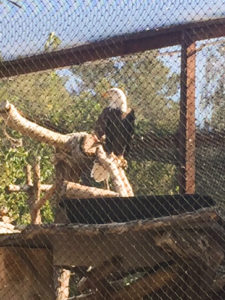 Zoo Tour
Zoo Tour
Our meeting concluded with a tour of the campus and the on premise Zoo. We could see Kerry’s work on full display throughout the campus on everything from zoo maps and banners to brochures and animal id tags. Kerry was able to call in a favor, as he handles so much of the printing for the Zoo, and he organized a behind the scenes tour for us. It was an amazing experience seeing all of the animals up close!
 Outside of printing, Kerry is happily married and the proud father of two. He also just welcomed his first granddaughter who is just 4 months old.
Outside of printing, Kerry is happily married and the proud father of two. He also just welcomed his first granddaughter who is just 4 months old.
Kerry loves to golf. Kerry says, “I play at golf. It’s just fun to be out on lovely real estate with friends enjoying the outdoors.” Kerry also does woodworking as a hobby and builds things like tables, shelves and jewelry boxes for family and friends. “I’m very goal oriented and I love to see the final product of my work. I guess that’s why I love printing so much.” said Kerry. Kerry also enjoys attending car shows and loves classic cars.
A Special Message
Less than one week after our meeting at Moorpark, the Moorpark campus community was struck by a senseless act of violence followed by a devastating wildfire. Kerry shared that 40% of the campus community has been directly affected by these events. Our thoughts and prayers are with all in the Moorpark, Ventura and Oxnard communities and to all of the students, family and friends affected.

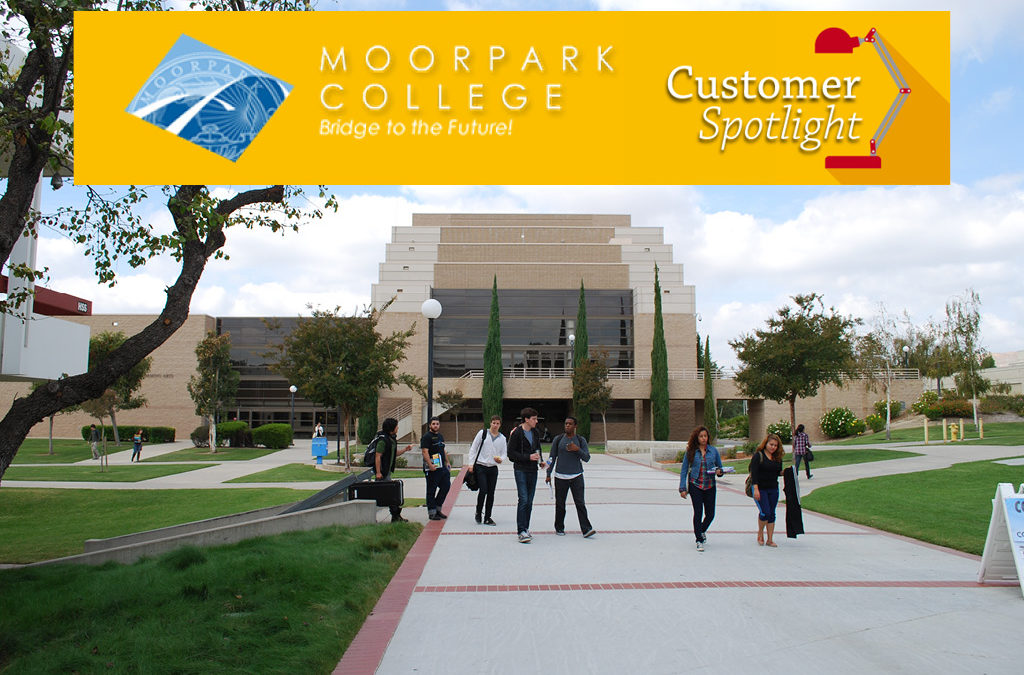
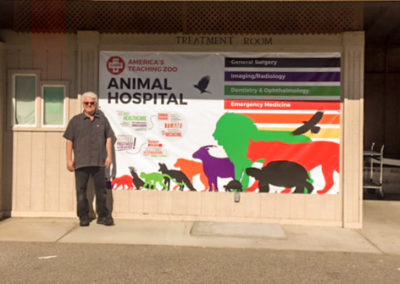
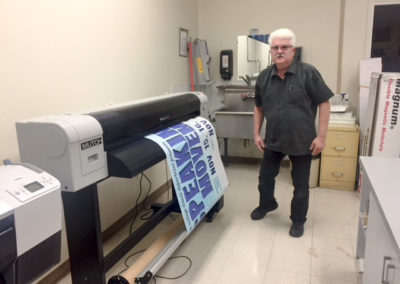
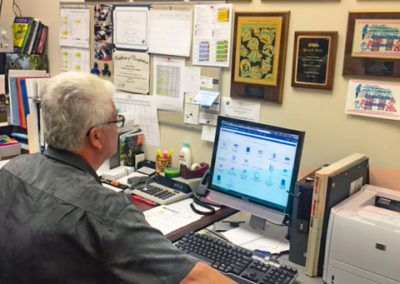

Recent Comments